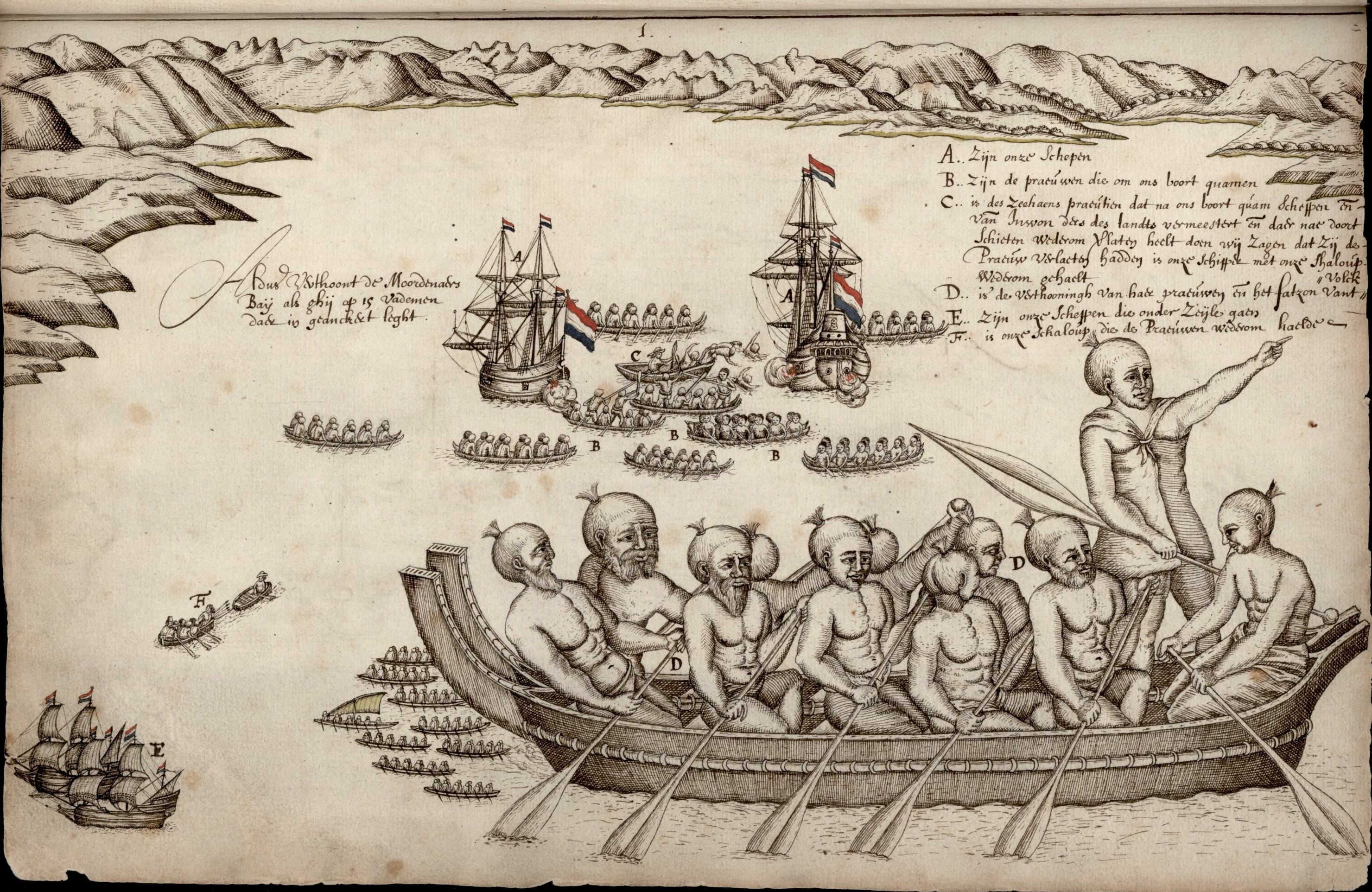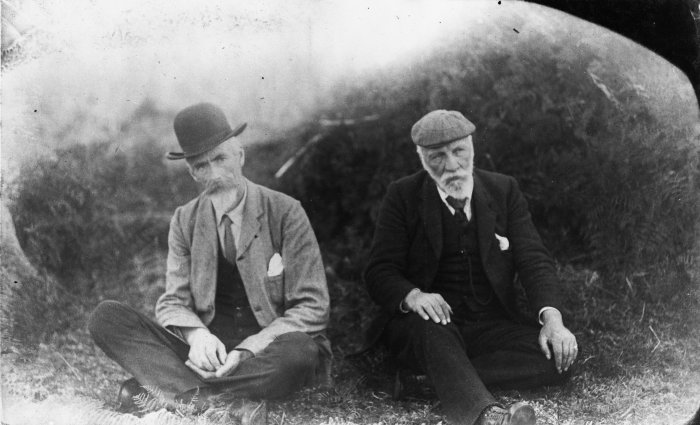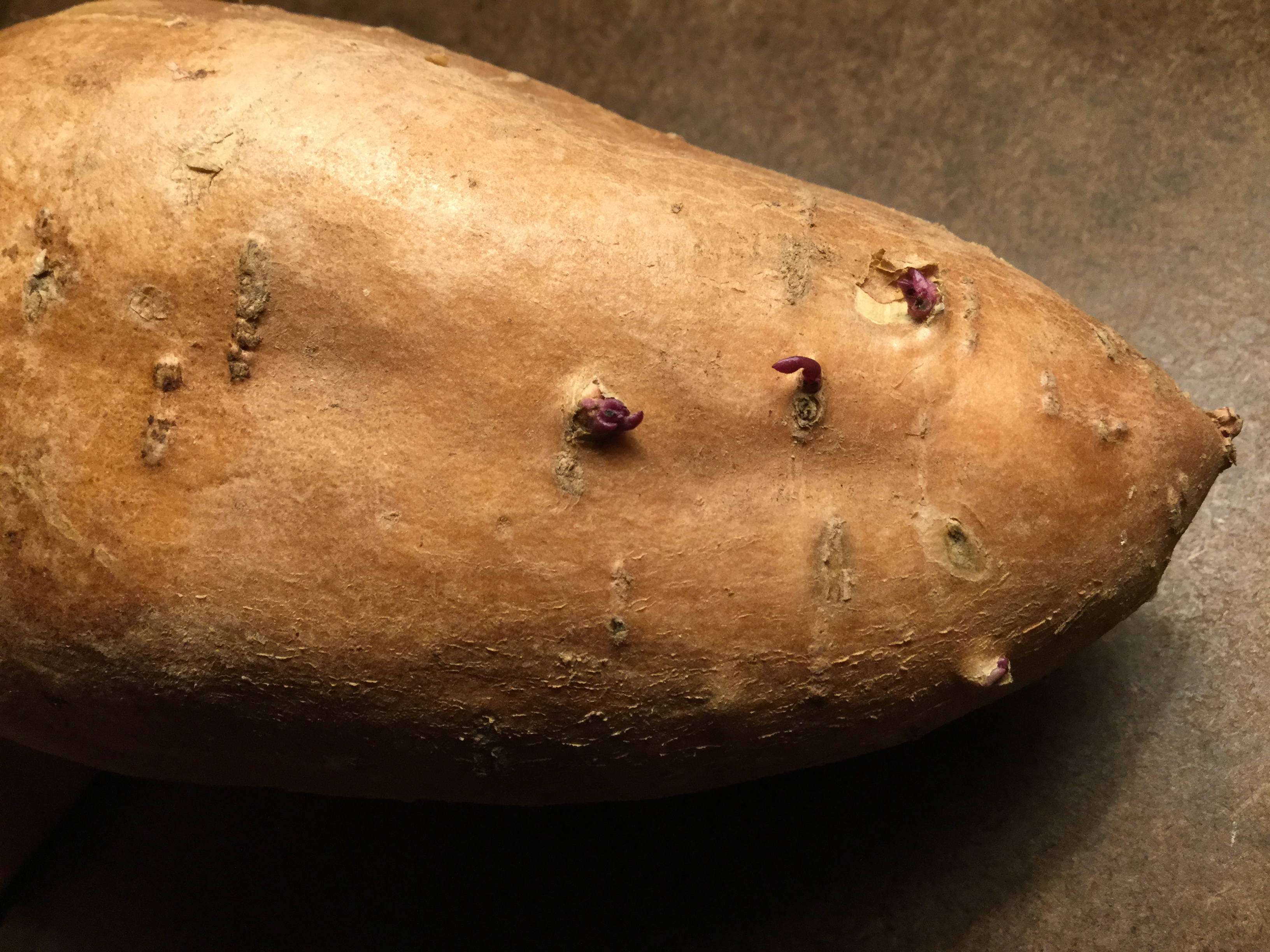|
Mānuka (canoe)
In Māori mythology, Māori tradition, ''Mānuka'' was one of the great Māori migration canoes, ocean-going, voyaging canoes that was used in the migrations that settled the South Island of Aotearoa (New Zealand). The canoe is said to have travelled to the Polynesian homeland of Hawaiki to procure ''kūmara'', a type of sweet potato. Although the ''Mānuka'' returned with ''kūmara'', most accounts state that efforts to germinate and grow the Tuber, tubers it brought back ended in failure. Origin story In ''Ngā Waka o Neherā'' (2009), Jeff Evans writes that ''Mānuka'' was built from the same ''tōtara'' tree as ''Āraiteuru'', her sister ''waka'' (canoe). There was a dispute between Tua-kakariki, who first found the log on the beach, and Rongo-i-tua, a visitor who was eager to return home. To stake his claim, Rongo-i-tua had deposited his own excrement on the log while Tua-kakariki was away trying to assemble a work party to move it. Rongo-i-tua was awarded the log and g ... [...More Info...] [...Related Items...] OR: [Wikipedia] [Google] [Baidu] |
Māori Mythology
Māori mythology and Māori traditions are two major categories into which the remote oral history of New Zealand's Māori people, Māori may be divided. Māori myths concern tales of supernatural events relating to the origins of what was the observable world for the pre-European Māori, often involving gods and demigods. Māori tradition concerns more folkloric legends often involving historical or semi-historical forebears. Both categories merge in to explain the overall origin of the Māori and their connections to the world which they lived in. The Māori did not have a writing system before European contact, beginning in 1769, therefore they relied on oral retellings and recitations memorised from generation to generation. The three forms of expression prominent in Māori and Polynesian oral literature are genealogical recital, poetry, and narrative prose. Experts in these subjects were broadly known as . The rituals, beliefs, and general worldview of Māori society were ... [...More Info...] [...Related Items...] OR: [Wikipedia] [Google] [Baidu] |
Māori Migration Canoes
Māori oral histories recount how their ancestors set out from their homeland in ''waka hourua'', large twin-hulled ocean-going canoes ('' waka''). Some of these traditions name a homeland called Hawaiki. Among these is the story of Kupe, who had eloped with Kūrāmarotini, the wife of Hoturapa, the owner of the great canoe '' Matahourua'', whom Kupe had murdered. To escape punishment for the murder, Kupe and Kura fled in Matahourua and discovered a land he called Aotearoa ('land of the long-white-cloud'). He explored its coast and killed the sea monster Te Wheke-a-Muturangi, finally returning to his home to spread the news of his newly discovered land. Other stories of various Māori tribes report migrations to escape famine, over-population, and warfare. These were made in legendary canoes, the best known of which are '' Aotea'', ''Te Arawa'', '' Kurahaupō'', '' Mātaatua'', '' Tainui'', '' Tākitimu'', and '' Tokomaru''. Various traditions name numerous other cano ... [...More Info...] [...Related Items...] OR: [Wikipedia] [Google] [Baidu] |
South Island
The South Island ( , 'the waters of Pounamu, Greenstone') is the largest of the three major islands of New Zealand by surface area, the others being the smaller but more populous North Island and Stewart Island. It is bordered to the north by Cook Strait, to the west by the Tasman Sea, to the south by the Foveaux Strait and Southern Ocean, and to the east by the Pacific Ocean. The South Island covers , making it the List of islands by area, world's 12th-largest island, constituting 56% of New Zealand's land area. At low altitudes, it has an oceanic climate. The most populous cities are Christchurch, Dunedin, Nelson, New Zealand, Nelson and Invercargill. Prior to European settlement, Te Waipounamu was sparsely populated by three major iwi – Kāi Tahu, Kāti Māmoe, and the historical Waitaha (South Island iwi), Waitaha – with major settlements including in Kaiapoi Pā near modern-day Christchurch. During the Musket Wars expanding iwi colonised Te Tau Ihu Māori, Te Tau Ihu, ... [...More Info...] [...Related Items...] OR: [Wikipedia] [Google] [Baidu] |
Aotearoa
''Aotearoa'' () is the Māori name for New Zealand. The name was originally used by Māori in reference only to the North Island, with the whole country being referred to as ''Aotearoa me Te Waipounamu'' – where ''Te Ika-a-Māui'' means North Island, and ''Te Waipounamu'' means South Island. In the pre-European era, Māori did not have a collective name for the two islands. Several meanings for Aotearoa have been proposed; the most popular translation usually given is "land of the long white cloud", or variations thereof. This refers to the cloud formations which are believed to have helped early Polynesian navigators find the country in Māori oral tradition. Beginning in the late 20th century, ''Aotearoa'' has become widespread in the bilingual naming of national organisations and institutions. Since the 1990s, it has been customary for particular parties to sing the New Zealand national anthem, " God Defend New Zealand" (or "Aotearoa"), in both Māori and English, wh ... [...More Info...] [...Related Items...] OR: [Wikipedia] [Google] [Baidu] |
Hawaiki
(also rendered as in the Cook Islands, Hawaiki in Māori, in Samoan, in Tahitian, in Hawaiian) is, in Polynesian folklore, the original home of the Polynesians, before dispersal across Polynesia. It also features as the underworld in many Māori stories. Anne Salmond states ''Havaii'' is the old name for Raiatea, the homeland of the Māori. When British explorer James Cook first sighted New Zealand in 1769, he had on board Tupaia, a Raiatean navigator and priest. Cook's arrival seemed to be a confirmation of a prophecy by Toiroa, a priest from Māhia. At Tolaga Bay, Tupaia conversed with the ''tohunga'' associated with the school of learning located there, called Te Rawheoro. The priest asked about the Māori homelands, 'Rangiatea' (Ra'iatea), 'Hawaiki' (Havai'i, the ancient name for Ra'iatea), and 'Tawhiti' (Tahiti). Etymology Linguists have reconstructed the term to Proto- Nuclear Polynesian ''*sawaiki''. The Māori word figures in traditions about the ar ... [...More Info...] [...Related Items...] OR: [Wikipedia] [Google] [Baidu] |
Kūmara
The sweet potato or sweetpotato (''Ipomoea batatas'') is a dicotyledonous plant in the morning glory family, Convolvulaceae. Its sizeable, starchy, sweet-tasting tuberous roots are used as a root vegetable, which is a staple food in parts of the world. Sweet potato cultivars, Cultivars of the sweet potato have been bred to bear tubers with flesh and skin of various colors. Moreover, the young shoots and leaves are occasionally eaten as Leaf vegetable, greens. The sweet potato and the potato are in the order Solanales, making them distant relatives. Although darker sweet potatoes are often known as "yams" in parts of North America, they are even more distant from actual yam (vegetable), yams, which are monocots in the order Dioscoreales. The sweet potato is Native species, native to the tropical regions of South America in what is present-day Ecuador. Of the approximately 50 Convolvulaceae#Genera, genera and more than 1,000 species of Convolvulaceae, ''I. batatas'' is the only cro ... [...More Info...] [...Related Items...] OR: [Wikipedia] [Google] [Baidu] |
Tuber
Tubers are a type of enlarged structure that plants use as storage organs for nutrients, derived from stems or roots. Tubers help plants perennate (survive winter or dry months), provide energy and nutrients, and are a means of asexual reproduction. Stem tubers manifest as thickened rhizomes (underground stems) or stolons (horizontal connections between organisms); examples include the potato and Yam (vegetable), yam. The term ''root tuber'' describes modified lateral roots, as in sweet potatoes, cassava, and dahlias. Terminology The term originates from the Latin , meaning 'lump, bump, or swelling'. Some writers limit the definition of ''tuber'' to structures derived from Plant stem, stems, while others also apply the term to structures derived from roots., p. 124 Stem tubers A stem tuber forms from thickened rhizomes or stolons. The top sides of the tuber produce shoots that grow into typical stems and leaves and the undersides produce roots. They tend to form at the s ... [...More Info...] [...Related Items...] OR: [Wikipedia] [Google] [Baidu] |
Tōtara
''Podocarpus totara'' (), commonly known as the , is a species of Podocarpus, podocarp tree endemism, endemic to New Zealand. It grows throughout the North Island, South Island and rarely on Stewart Island, Stewart Island / Rakiura in lowland, montane and lower subalpine forest at elevations of up to . Tōtara is commonly found in lowland areas where the soil is fertile and well drained. Its Māori language, Māori name comes from the Proto-Polynesian language, Proto-Polynesian word *''tootara'' (related to the word ''tara'' lit. 'thorns, spines and prickles, thorn') which when passed down to descendant languages refer to spiny creatures, especially the Spot-fin porcupinefish, porcupinefish (''Diodon hystrix'') due to its spiky leaves. The spelling "totara" without the Macron (diacritic), ''tohutō'' is also common in English. Description The tōtara is a medium to large tree, which grows slowly to around exceptionally to ; it is noted for its longevity and the great Tree girt ... [...More Info...] [...Related Items...] OR: [Wikipedia] [Google] [Baidu] |
Āraiteuru
(also written ) was a canoe () of some of Ngāi Tahu's ancestors in Māori tradition. The canoe was conveyed to New Zealand by the north-east wind, carrying the chiefs Kirikirikatata, Aroarokaehe, Mauka Atua, Aoraki, Kakeroa, Te Horokoatu, Ritua, Ngamautaurua, Pokohiwitahi, Puketapu, Te Maro-tiri-a-te-rehu, Hikuroroa, Pahatea, Te Waioteao, and Hapekituaraki. The canoe's fishing net and the water gourd (calabash) were turned into stone at Moeraki in the South Island, where they can still be seen in the form of the Moeraki Boulders. The canoe itself remained at Shag Point. Dunedin's pan- Ārai Te Uru Marae, located in the suburb of Wakari, is named after the canoe. See also * Arahura (canoe) * Tākitimu ''Tākitimu'' was a ''waka (canoe), waka'' (canoe) with ''whakapapa'' throughout the Pacific Ocean, Pacific particularly with Samoa, the Cook Islands, and New Zealand in ancient times. In several Māori mythology, Māori traditions, the ''Tāk ... * Uruaokapuar ... [...More Info...] [...Related Items...] OR: [Wikipedia] [Google] [Baidu] |
Sweet Potato
The sweet potato or sweetpotato (''Ipomoea batatas'') is a dicotyledonous plant in the morning glory family, Convolvulaceae. Its sizeable, starchy, sweet-tasting tuberous roots are used as a root vegetable, which is a staple food in parts of the world. Cultivars of the sweet potato have been bred to bear tubers with flesh and skin of various colors. Moreover, the young shoots and leaves are occasionally eaten as greens. The sweet potato and the potato are in the order Solanales, making them distant relatives. Although darker sweet potatoes are often known as "yams" in parts of North America, they are even more distant from actual yams, which are monocots in the order Dioscoreales. The sweet potato is native to the tropical regions of South America in what is present-day Ecuador. Of the approximately 50 genera and more than 1,000 species of Convolvulaceae, ''I. batatas'' is the only crop plant of major importance—some others are used locally (e.g., ''I. aquatica'' "ka ... [...More Info...] [...Related Items...] OR: [Wikipedia] [Google] [Baidu] |
Kumara For Sale In New Zealand (2021)-2
Kumara may refer to: Places * Kumara (Mali), a province * Kumara, New Zealand, a town * Kumara (New Zealand electorate), a Parliamentary electorate Other uses * Kumara Illangasinghe, an Anglican bishop in Sri Lanka * Kumara (surname) * The Four Kumaras, sages from the Hindu tradition * Sweet potato, called ''kūmara'' in New Zealand :* Sweet potato cultivation in Polynesia, for information about kumara in a Polynesian context * ''Kumara'' (plant), a genus of plants from South Africa related to ''Aloe'' * A Hindu god and general, also named Kartikeya **''Kumārasambhava ''Kumārasambhavam'' ''( ) (transl. - "The Birth of Kumāra")'' is an epic poem by Kālidāsa. It is widely regarded as the finest work of Kalidasa as well as the greatest kāvya poem in Classical Sanskrit. The style of description of spring set ...'', ancient Indian epic by Kalidasa about Kartikeya See also * Kumaran (other) {{disambiguation ... [...More Info...] [...Related Items...] OR: [Wikipedia] [Google] [Baidu] |






